The story of the paar
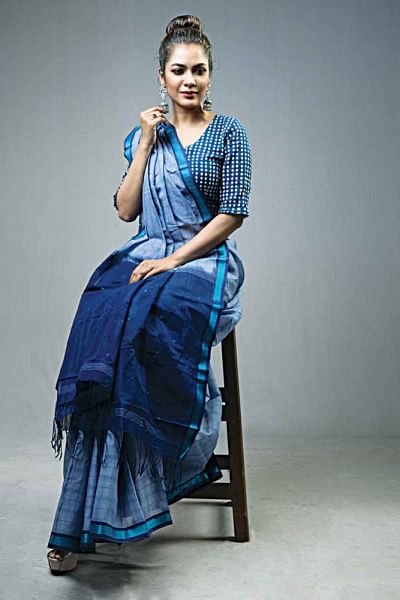
Initially worn as a two-piece garment, the sari evolved into the present-day fabric with a jomin (the body of the sari), a paar (the border), and an anchol (the loose end after the drape) — three primary elements that make it an elegant attire.
The paar binds the jomin, and sometimes the anchol, creating an oeuvre that enchants women, and draws the attention of the onlookers to the intricacy that is the design of the sari. It also serves a very practical purpose: it borders the fabric of the jomin so that the weave does not fall apart. Usually made from thicker yarn, the paar is often stiffer than the rest of the sari so that it does not fold at the edge with wear.
Noted for their floral and geometric extravagance in designs, the Jamdani upholds a richness in the wide variation of motifs that the weavers interpret in the sari. In the past, animal figures were also present in the sari's patterns, which is now all set for a revival.
The paar of this particular textile is unique in the sense that they are translucent in nature, the arrangements juxtaposed on the sheer weave, which is often in the same colour and texture as the jomin. Most often in contrasting colours, the Jamdani paar is neither broad, nor short or narrow. It is in the taant saris of Tangail, and Northern regions where the size of the paar becomes a prominent feature.
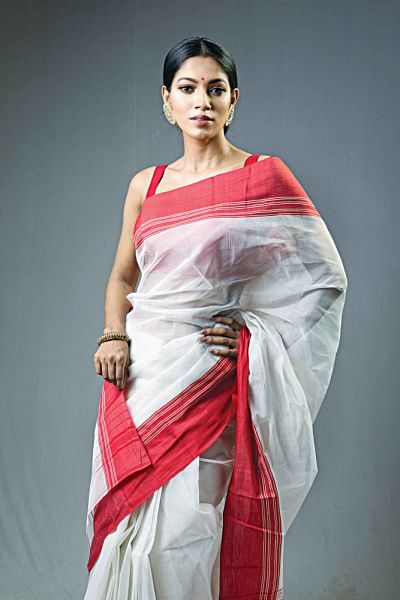
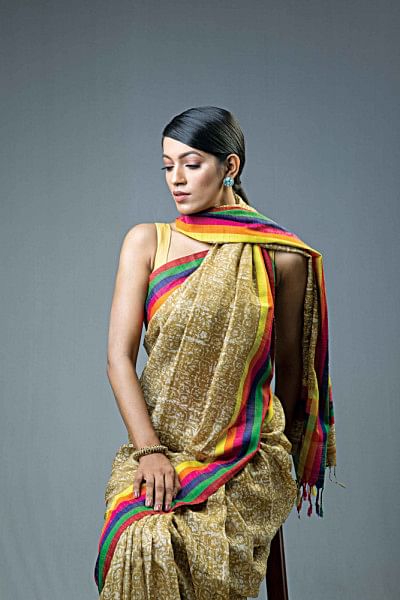
Taant saris are simplistic in nature, their attraction relying in the mastery of the weaver. And like the jomin itself, the paar is not elaborate, sometimes running like a monochrome ribbon, or just a line of zig-zag weave, or at times just straight lines.
The Mirpur Benaroshi shines in the intricacy of the paar. Often executed in strands of silver or gold, the motifs — peacock, birds, paisley — come to life through the artisan's creativity.
The colour of the paar is either in sync with the entire ensemble. Sometimes it is in stark contrast. Consider the auspicious white and red —colours of positivity. That is your Baishakh in a wild mix. The same works during the Sharodio utshab, when goddess Durga descends to her father's abode on earth.
If women find the paar fascinating, some artists think it is enchanting. Murtaja Baseer is one such artist. His leading ladies are set in two complementary settings — one deeply rooted in pastoral Bengal, and the other in the more modern context of city life.
His realism often depicts a lady donning the simplest of saris, with a paar made prominent with a single stroke of a colour— often offsetting the composition in its sheer radiance. His Avant-garde paintings set in urban settings most often portrays the sari in its simplicity. But in Baseer's signature abstract realism that breaks down the real-life image of his muse often shows a brush of colour, sometimes streaks of what is unmistakably a sari's paar.
While the sari can easily be considered a six-yard-work-of-art — a creation of weavers, and modern-day designers — the paar is nothing short of a border that frames the canvas — often extravagant, sometimes majestic in its simplicity.
In the sphere of fashion, it is one feature of grace for the sari. It is an integral part of the design of the stitchless yard, which has been the garb of choice for women of this region for the last five millennia. And its appeal, like the sari itself, is timeless.
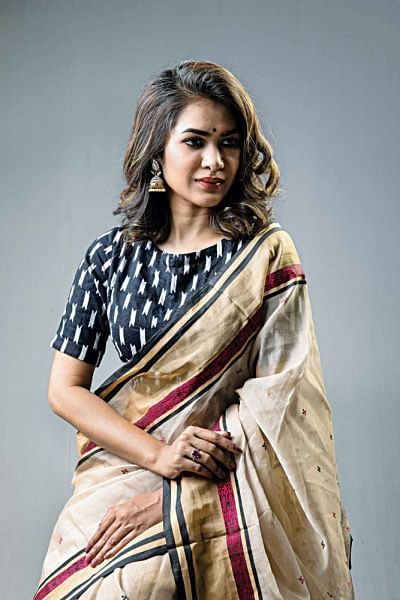
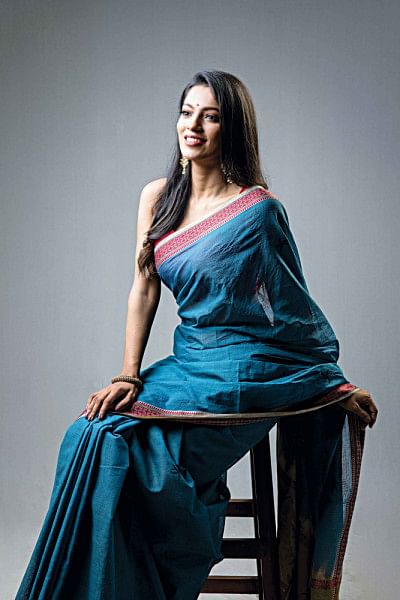

 For all latest news, follow The Daily Star's Google News channel.
For all latest news, follow The Daily Star's Google News channel. 



Comments